How to Find & Delete Duplicate Files on Mac with Smart Folders
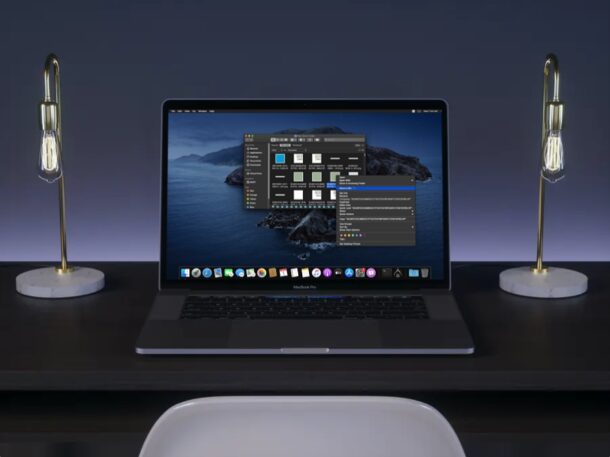
Depending on your line of work you may end up in a scenario where you have a variety of duplicate files on a Mac. Sometimes this goes unnoticed, but occasionally the Mac will run low on storage space and you might want to free up space by finding and removing those duplicate files from the Mac. Thankfully, finding duplicate files on macOS is not nearly as hard as you may think.
If you’ve been using the same Mac for a while, it may have accumulated a large collection of files that could potentially include duplicates that use up valuable storage space on your device. This can be particularly true with large media files, since often users will duplicate a video file, project, or PSD file before modifying it further. By removing these unnecessary files, you can gain back some of your storage space that could be used for other data or something more important. This is especially valid considering the fact that SSDs in most modern Macs aren’t user upgradeable.
Finding these duplicate files is the hard part though, but if you couldn’t figure that out, you’ve come to the right place. In this article, we’ll be discussing how you can use a smart folder to find duplicate files stored on your Mac.
How to Find Duplicate Files on Mac
Regardless of whether you own a MacBook or iMac or Mac Pro, finding duplicates is actually a pretty simple and straightforward procedure on macOS. Just follow the steps below to get started.
- Click on “File” in the menu bar of your Mac desktop.

- Now, choose “New Smart Folder” from the dropdown menu.

- This will open a window on your screen. Click on the “+” icon located next to the “Save” option as shown in the screenshot below.

- Choose the “Kind” drop-down menu and select a file type you want to narrow the search down by.
- Now, you’ll be able to browse for all files stored on your Mac, based on the file type whether they’re documents, applications, music files, etc. Scroll through this grid view to find the duplicate files you want to delete, it helps to order the file list by ‘name’ so that you can easily identify duplicate files

- Confirm the files are duplicates by opening them and comparing the documents in question, you can also use “Get Info” on the files to make sure the documents are the same file size
- You can right-click on any of the duplicate files and choose “Move to Trash / Bin”. To permanently remove it from your system, you just need to right-click on the Trash Bin in your Mac desktop and empty the Trash bin.

That’s pretty much all there is to it. Now you’ve learned how to find duplicate files on your Mac with ease using the built-in smart folder feature which uses search tools on the Mac to narrow a folder by file type.
Third Party Duplicate File Finders for Mac
Although the approach we just covered is one way to find and remove duplicate files on your macOS device, there are several third-party apps that are available on the App Store which makes this process easier and more seamless as they are specifically designed for this purpose. These apps can automatically search your system and show you duplicate files that can be removed.
For example, you can try out apps like DupeGuru, which we have discussed for this purpose before, Gemini 2, or Duplicate File Finder Remover which are free to use but offer paid upgrades for full features, and you may find them to be useful for tracking down data redundancy.
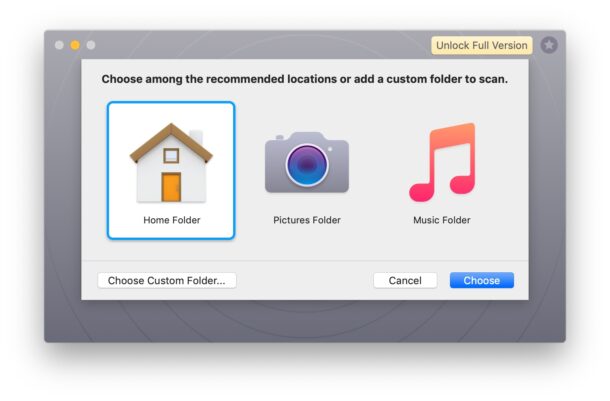
If you have any particular experiences with third party duplicate file finders for MacOS, do share your thoughts about those in the comments of course!
Freeing up storage? There’s more to try
Other than deleting duplicate files, you can also free up space by remove the “Other” data and also delete apps, documents, files, and backups that you no longer use. Make sure to check your Mac’s storage space regularly to see if you have ample space for new software, and also to perform best, as macOS likes to have.
If you’re subscribed to iCloud, have a solid internet connection, and like using cloud storage services, you can also move some of the files, photos, and documents to iCloud when you’re running low on storage space. For example, you can use iCloud Photos on the Mac to seamlessly share pictures between Macs (and iPhone and iPads) while also not overburdening local storage space. iCloud files get automatically synced across all your Apple devices, which only adds convenience as you switch between devices.
Were you able to find and remove duplicate files that were stored on your Mac? Have you used a third-party app for the same purpose? Which method is your preferred approach to finding duplicate data on your computer? Share your thoughts and experiences in the comments section.

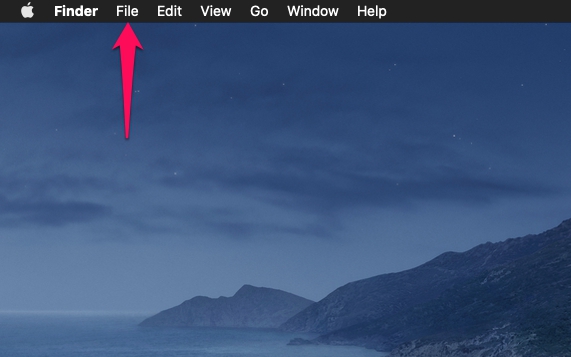
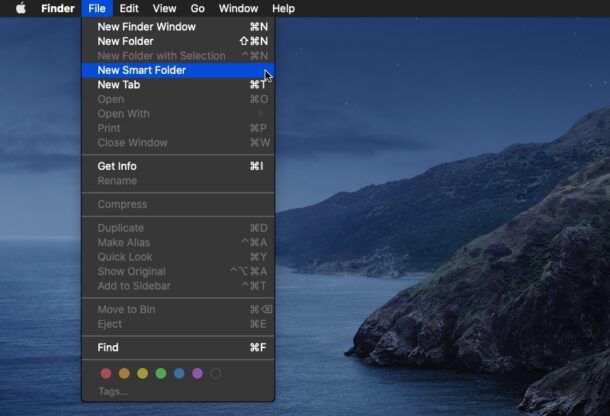
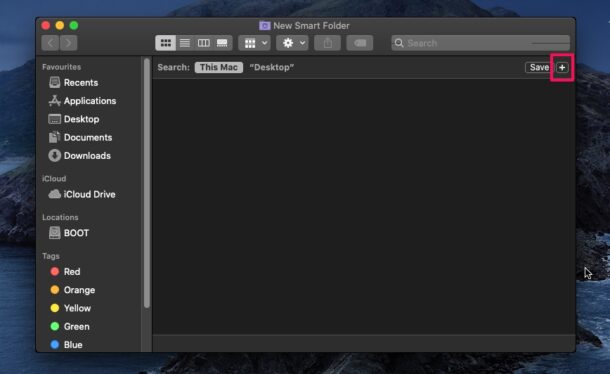
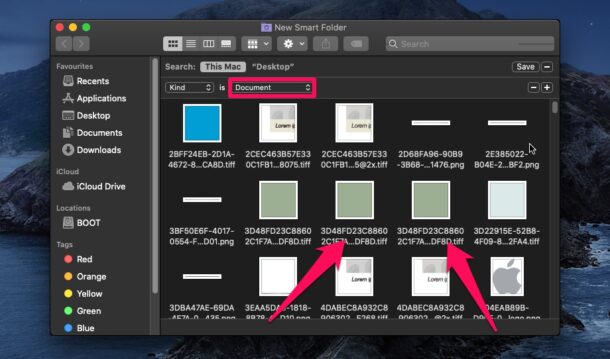


Left as comment on: https://osxdaily.com/2020/09/17/how-find-duplicate-files-mac/
I used to subscribe to Prosoft Engineering’s Drive Genius which has a Find Duplicates option. This program is useless. Yes, it finds duplicates, but how it goes about it is ridiculous. The option states: “Find files with the same content and replace the duplicates with an alias to the file that was most recently used”.
I suppose you could say that in some ways it accomplishes this. What it DOES do is list the found files as “Alias” in the “Kind” column in the Finder, BUT IT DOES NOT ACTUALLY CHANGE THE FILE EXTENSION ON THE FOUND FILES TO “.ALIAS”. It leaves the original file extension on the found files so the Mac can’t do a search for aliases allowing you to erase them!
It is truly a half-assed approach and as such, I have not continued my subscription. Talking to them about this falls on deaf ears. When you contact them, you get some kid behind the desk that doesn’t grasp what it is you are trying to get him to understand, but insists the files have been changed to true aliases. They have not! This is surprising for a company that has been around as long as they have. I’d have to say they couldn’t care less about creating actual “Aliases” of the duplicates that the “Find” function of the OS recognizes, but instead creates many thousands (in my case) of files which, when clicked, yes, takes you to the “Original”, but leaves you unable to do a master search for aliases on your hard drive to delete them all in one fell swoop!!!!
Sorry Prosoft Engineering, but you’ve permanently lost me as a customer.
MIS (IT) department at the American Film Institute.
Hi J Porrello,
This article is about using the native MacOS Smart Folders feature to find duplicate files, it is not about third party software. There is nothing about the product you mention here.
If you have problems with a particular software or service you should reach out to the developer of that software or service directly.
– Paul
Or … open a regular folder, and search for “.pdf”. When the window popups up, select “PDF Document”.
I was expecting the Smart Folder to actually point out duplicate files, not that I’d have to look for them myself.
There is no ‘new smart folder’ tab on my Mac? Running MacOS Mojave 10.14.6
In Finder if you pull down the File menu you can select to make a New Smart Folder
Are there any apps that will replace duplicates with apfs clones? This would seem to be a terrific way to safely reduce storage space without breaking anything
Also, why don’t any of the third party apps use hashing functions to determine whether the files are exact duplicates? Using file size and other attributes seems a bit clunky
@Yuz: The apfs clone idea is actually brilliant. Though, in truth, Apple already thought of it. There’s three kinds of “copy” on a Mac:
A “copy” (which is a literal bit-for-bit duplication of the file)
A “clone” (which is SORT of a copy, more on that in a sec)
A “hard link” (which is a direct reference to the original file. It is just a pointer located back to the origin point).
APFS clone files (or ‘copy on write clones’) are the middleground. When one duplicates a file in-volume, APFS DOES create a “new file” but it SHARES the same data blocks as the source. It basically says “refer to the original for all the identical bits.” As divergence occurs, as with editing, the data that DIFFERS is saved separately, the “bucket” housing the common data gets emptied out a bit, slowly diminishing with each alteration until files have no shared data at all. This all happens invisibly, native to the OS. The PROBLEM is Apple also FAILED TO PROVIDE ANY WAY TO TELL. Either if they overlap OR by how much. This is same-file-system, same-volume exclusively, but the effect IS seen on free space, which affects all volumes within that container.
Consider the man page for clonefile():
“The cloned file dst shares its data blocks with the src file but has its own copy of attributes, extended attributes and ACLs which are identical to those of the named file src with the exceptions [of ownership information, setuid and setgid bits]. Subsequent writes to either the original or cloned file are private to the file being modified (copy-on-write).”
See why this could be sinister? Say I have 2 100GB files, one is SOURCE the other CLONE. Now, say I open CLONE and make a minor alteration. But say said alteration makes a significant difference in how the internal data would be stored, shifting all the blocks over one, for example. Abruptly, you have 100GB gone from your system on save. More relevantly, it’s 100GB YOU THOUGHT YOU HAD. Yes, the file would have absorbed that same space in the case of a true copy, too, but it’s too easy to get misled by such an event.
Likewise, in the case of “bitrot” (file corruption) if said degradation takes place WITHIN the aforementioned “bucket,” now BOTH “files” are worthless. This is as opposed to just making the true copy, having your calculated space be accurate, and having a CHANCE, at least of one of the two files surviving, in the case of partial drive failure, virus, or other software-related mishap.
As to the hashing thing, bear in mind that a SINGLE CHAR DIFFERENCE results in an entirely different hash. file.ext and file (1).ext are TOTALLY different in the eyes of a string compare, notwithstanding how brutally slow it would be N^(N-1). Unless you’d prefer to keep a local cache of every file’s hash on the system just for duplicate locating purposes? That wouldn’t do your drive space any favors either.